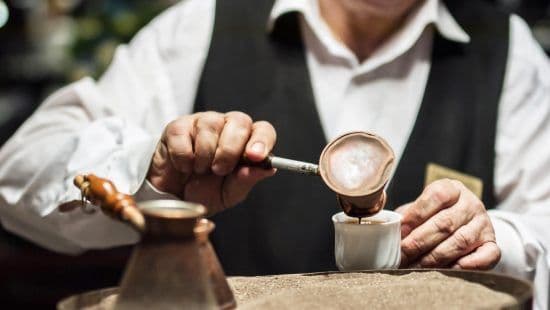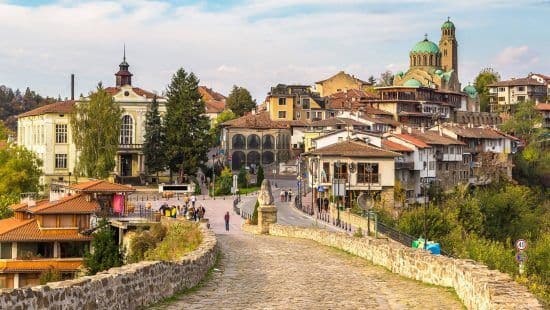Rich with the relics of centuries past, the countries of Eastern Europe have been uniquely fortunate to maintain a strong cultural heritage at the core of many aspects of their lives. From their ceremonial clothing to musical preferences and architecture, the past has played a major role in shaping the bright and dynamic future of the communities along the Danube River. During our journey from Bucharest to Vienna, guests board the elegant MS Amadeus Silver II to cruise through many of these traditional communities in Romania, Bulgaria, Serbia, Slovakia and Austria. Below are five of the most distinctly traditional cultural experiences guests will enjoy as they journey through these countries.
1. The Puszta, Hungary
Like many other countries in the world, the richest cultural heritage of Hungary can be found in its rural communities, such as the vast prairie region of Puszta. This “Big Sky Country” is marked by very few features, which makes the hospitality of the locals in each small town that much warmer and more inviting. The highlight of the excursion to the Puszta is the equestrian show performed by the local Magyars, who exemplify their deep connection with their horses as they perform extremely technical tricks, such as riding two horses by standing on them or instructing them to play dead. There is also the opportunity to see how the traditional people of Hungary live, including the sheep, pigs, and instantly recognizable long-horned cows that they raise on their ranches.

2. Veliko Tarnovo, Bulgaria
Nestled in the foothills of the Balkan Mountains, Veliko Tarnovo offers a glimpse of one of the most traditionally Bulgarian lifestyles, courtesy of its five millennia–old history and role as capital of the Second Bulgarian Empire. Between the tightly packed old Bulgarian homes can be found artisans selling an assortment of hand-made jewellery, delicately painted bowls and wooden carvings made from local pine. Drifting in and out of these small family businesses, the complex rhythms of Bulgarian folk music lead the way through the narrow terraces of the “City of the Tsars”.

3. St. Sava Church — Belgrade, Serbia
This smooth and unusual drink was born of necessity. In Hanoi during the Vietnam war eggs were used to replace dairy which was in short supply. Today it is served in coffee shops throughout the country, placed atop a small candle to keep warm during a leisurely afternoon of people watching and snacking on Bánh Xoai (mango sweet cakes). The silkiness of the eggs along with the sweetness of the sugar and condensed milk does an excellent job of reducing the natural bitterness of the Robusta coffee and creates a creamy foam on the surface. Use the teaspoon provided to dig deep and savour every drop.

4. Bran Castle — Bran, Romania
Fable and fantasy abound during a visit to what is colloquially known as “Dracula’s Castle”. While there is no evidence that Bram Stoker had this imposing structure in mind when he penned his famous novel, the real-life intrigue of the castle of the beloved monarch Queen Marie is just as compelling. This castle was gifted to Queen Marie by the local people following the formation of the enlarged Romania in 1918. It is believed that Queen Marie was integral to Ferdinand joining World War I. She won over the people of Romania with displays of service, such as daily visits to the Romanian Red Cross (earning her the label “Mother of the Wounded”). In Bran Castle, you will practice the uniquely Romanian pastime of admiring Queen Marie as you peruse her personal effects, jewels and taste for interior design.

5. Musikverein Golden Hall — Vienna, Austria
Once home to composers such as Mozart and Beethoven, Vienna witnessed the zenith of European classical music. It is also known for its inspiring art, imperial architecture and charming coffee houses. The baroque white-washed buildings of the famous Ring Road act as an amphitheatre for the romantic songs of bohemian street musicians. While this unconventional set-up is enthralling, it is not to be confused with the rich sounds produced in the world-famous Musikverein Golden Hall. It is here that we are treated to a concert by the Vienna Mozart Orchestra, which sounds so remarkable that it could be Mozart himself performing at the age of six for the Imperial Court at Schönbrunn Palace.

Travelling a short distance down the Danube River, diverse as it is unpredictable, transports you from the cowboy culture of the Puszta to the refinement of Vienna. To best immerse yourself in these many traditional cultures of Eastern Europe, a river cruise is ideal. This is due to the uncompromised access provided by a river cruise, paired with its unparalleled service and accommodation. Join us as we sail from Bucharest to Vienna aboard the MS Amadeus Silver II to discover these great cultures.
Journey through
Eastern Europe
Join us as we discover the traditional highlights of Eastern Europe along the sparkling blue danube.




